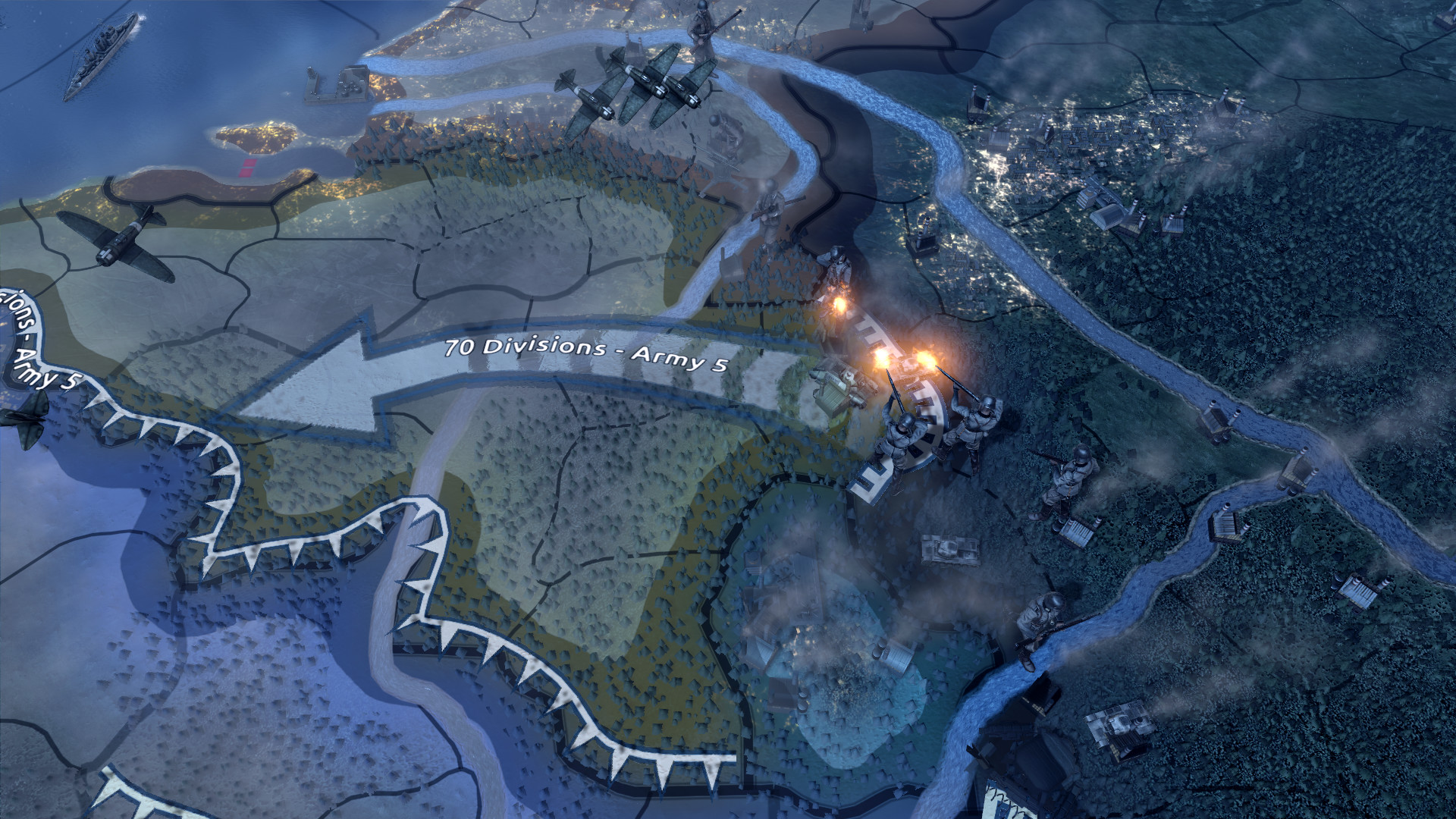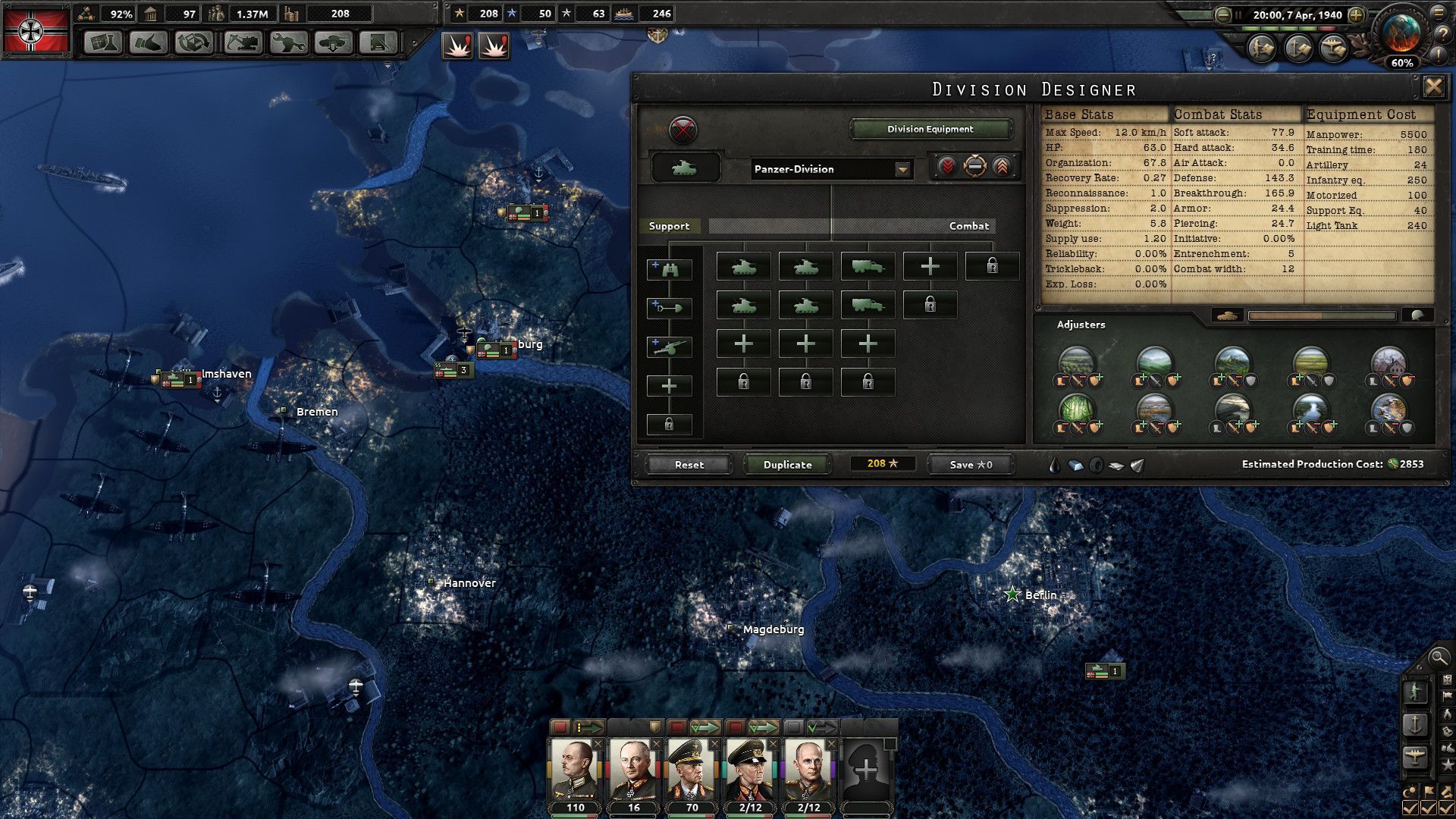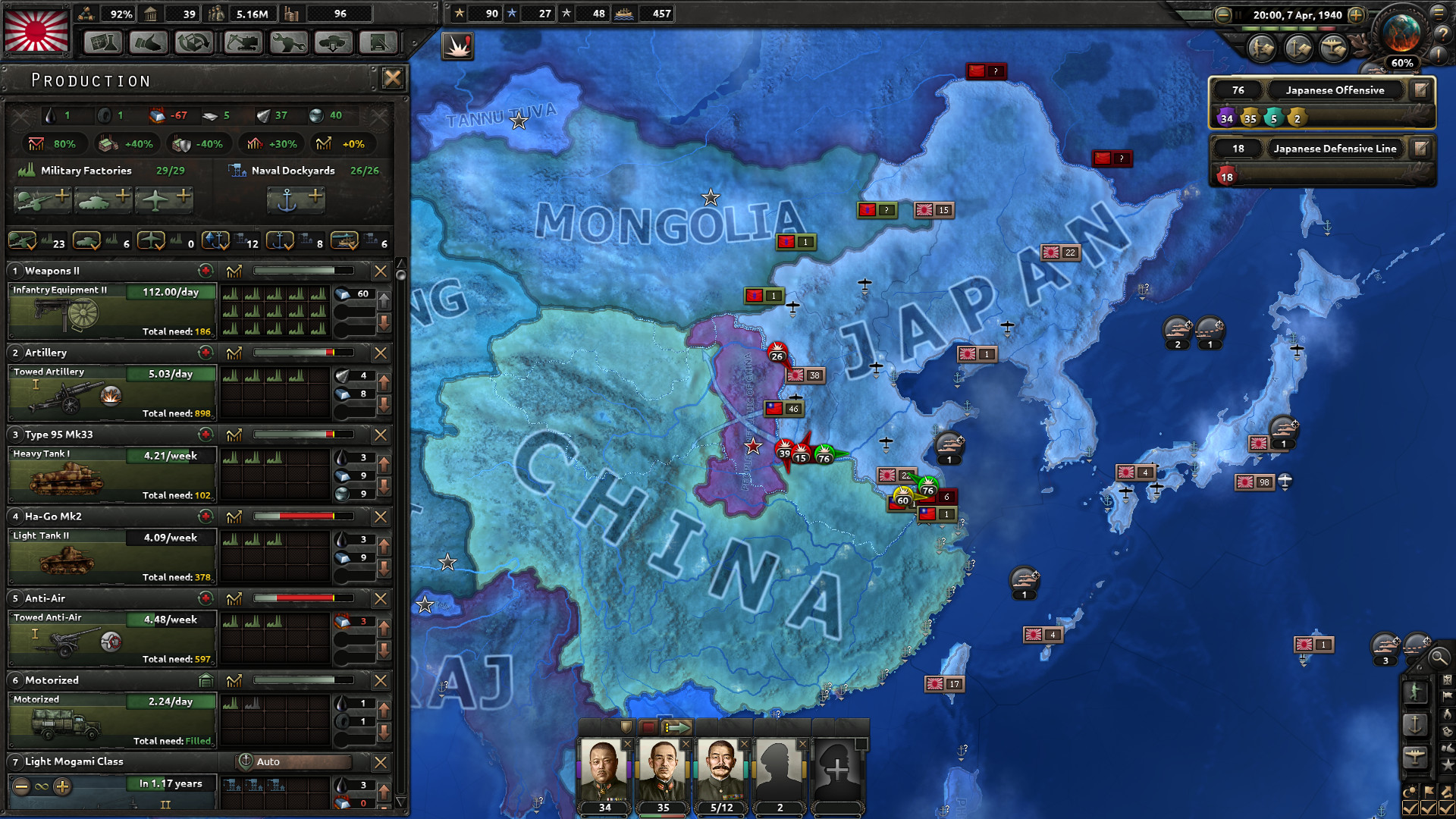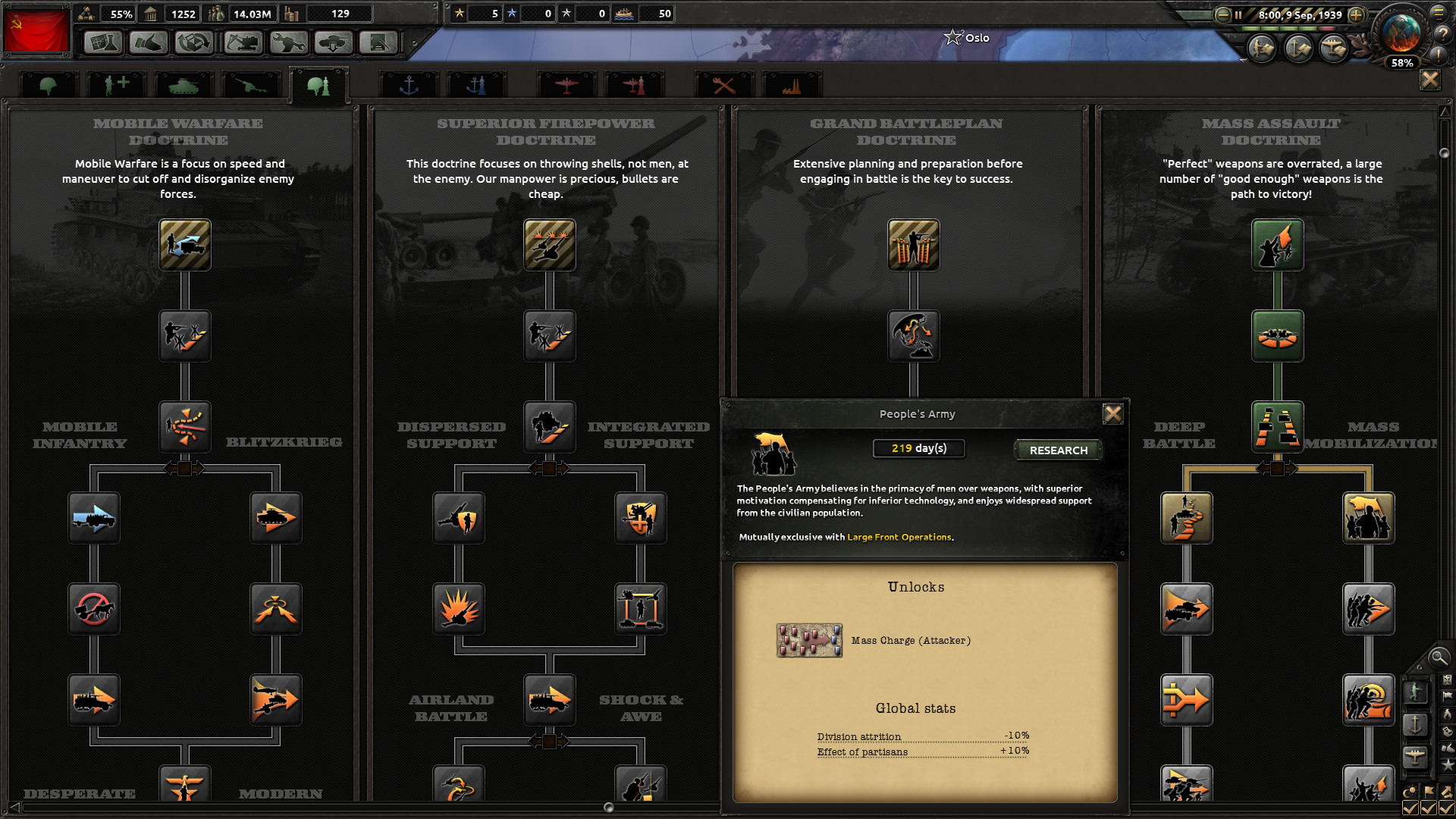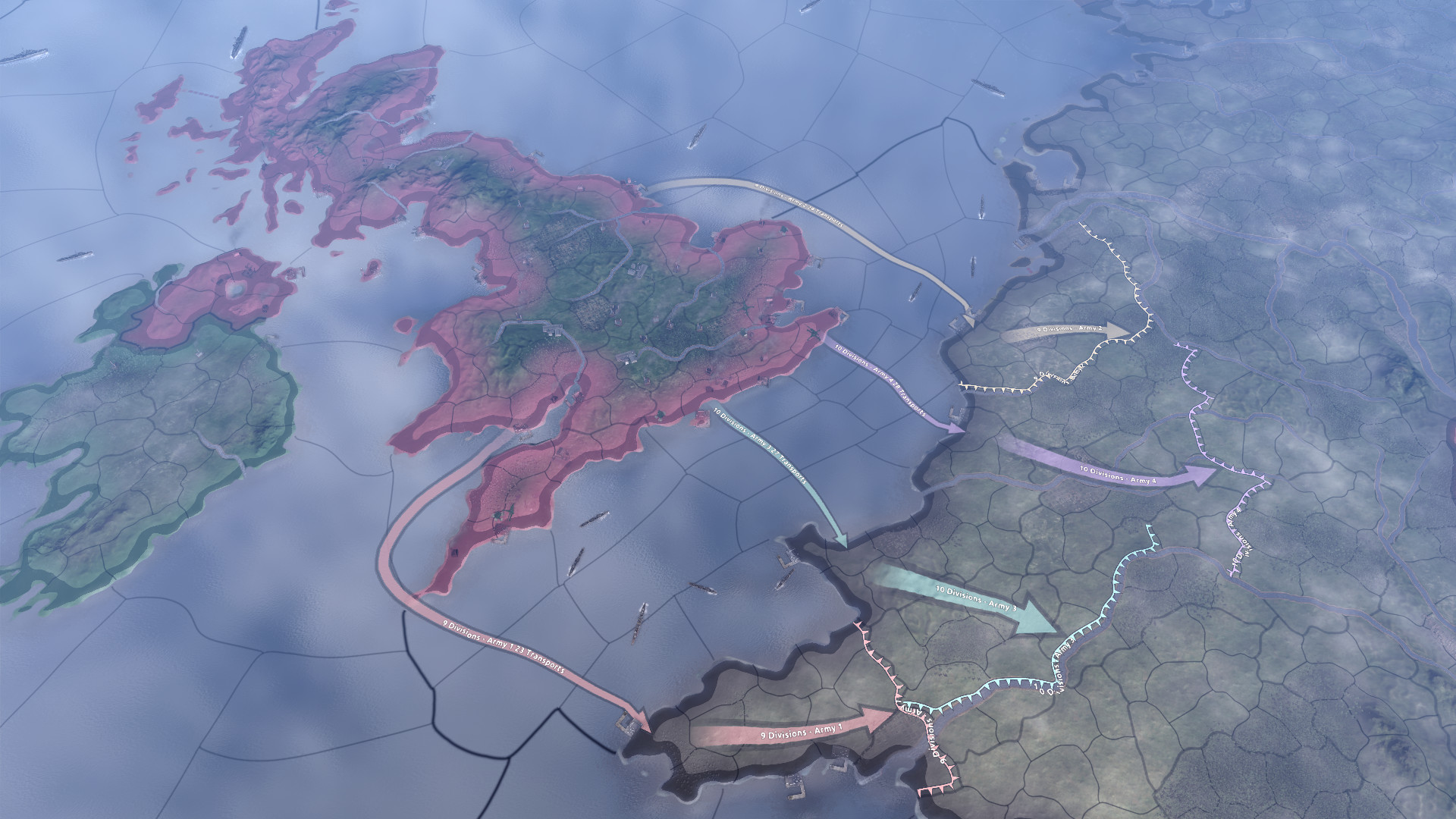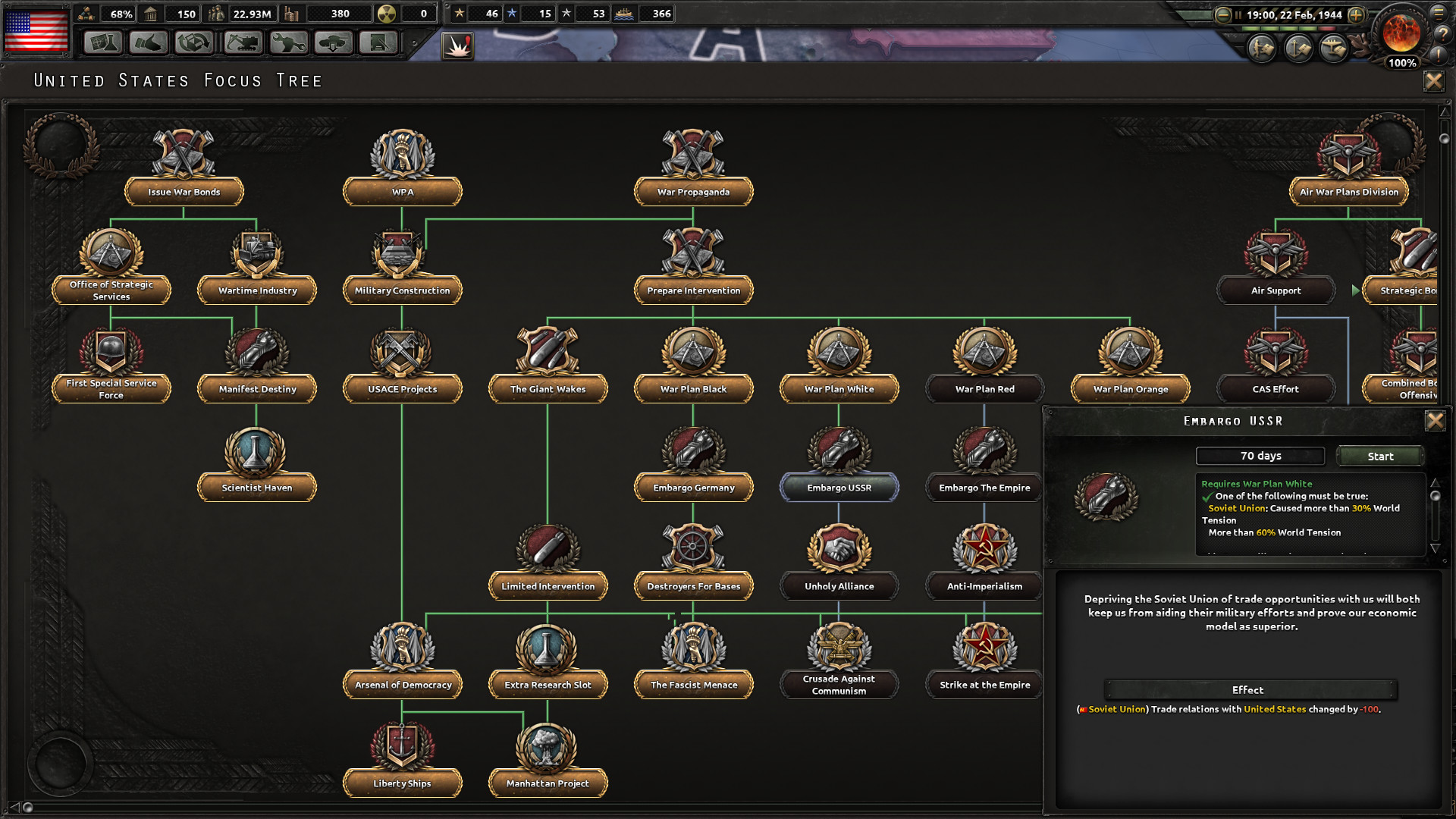From the heart of the battlefield to the command center, you will guide your nation to glory and wage war, negotiate or invade. You hold the power to tip the very balance of WWII.
It is time to show your ability as the greatest military leader in the world. Will you relive or change history? Will you change the fate of the world by achieving victory at all costs?
Main Features:
- Total strategic war: War is not only won on land, sea and in the air. It’s also achieved in the hearts and minds of men and women.
- Authentic real-time war simulation: Let the greatest commanders of WW2 fight your war with the tools of the time; tanks, planes, ships, guns and newly discovered weapons of mass destruction.
- Assume control of any nation: Choose from the greatest powers striving for victory, or the small nations trying to weather the storm.
- Turn the world into your battlefield: Experience the full WWII timespan in a topographical map complete with seasons, weather and terrain. Snow, mud, storms can be both your strong ally and a ruthless enemy.
- Negotiate or force your will: Experience the advanced politics and diplomacy systems, form factions, engage in trade for resources and appoint ministers to your party.
- Intense Online Combat: Battle in both competitive and cooperative multiplayer for up to 32 players. Featuring cross-platform multiplayer.
- Give your nation a unique edge: Experience the flexible technology system, where all major powers get their own unique identity. Develop detailed historic tanks and planes through research and army experience.
Everyone will receive:
- Poland: United and Ready:
A Free DLC adds a unique focus tree for Poland, new 3d models for tanks and planes, 2d assets, and extra leader portraits for the ultimate in historical accuracy.
- Forum Avatar
- Wallpaper

Hello, and welcome back to another DevDiary about content coming in the 1.11 Barbarossa patch and its accompanying DLC. As always, keep in mind that the things shown in this DevDiary are still under development, so the numbers and UI might change before release.
Ever since we revealed the ship designer in Man the Guns, people have been asking about a similar system for tanks. We did, however, want to improve a bit on the ship designer. In particular, we felt that the ship designer was encouraging too many generalist designs. Part of the problem is that ships have a very long lead time before they become available, so it is difficult to iterate on the designs in a timely fashion. When your ship takes two years to build, you cant really specialize it too much, because you cant always accurately predict the situation in two years.
Thankfully, tanks require a somewhat smaller investment (although our QA certainly has tried to make designs that rival ships in cost), so you see a new tank design in the frontlines much sooner than a new ship, allowing you to react to new situations much faster.
Another thing is that ships usually had trade-offs between different capabilities, in the sense that the space (or module slot) taken up by a torpedo launcher could also be taken up by an AA gun, making the ship better against one or the other type of enemy. But rarely did you want a ship that had no AA or no way to defend itself against surface targets, so you always wanted some AA and some ship attack.
Tanks, on the other hand, dont usually have trade-offs in the same way. You dont usually design a tank, wondering if you should put on another AA gun or a second gun against surface targets (unless, of course, you are German and it's 1944).
But Tanks still have trade-offs in their design, and we wanted to represent those. Traditionally, tank design revolves around three aspects: Mobility, Firepower, and Protection. A well-armored tank is slow, a fast tank cant carry a big gun, and a big gun requires a large tank, which is difficult to armor. During the war, different nations tried different approaches, and learned different lessons from their observations - it is no surprise that the last German tanks of the war were heavily-armored vehicles carrying massive guns, but the first post-war design was the comparatively lightly armored but well-armed and quite nimble Leopard 1.
So we wanted to make you think about these three aspects, and have it be a trade-off between them. However, in a grand strategy game, other aspects also matter more than in the typical comparison of tank designs - the best tank in the world is useless if it breaks down on the way to the battlefield (Panther fans take note), and it is even more useless if you cant afford it. So we wanted cost and reliability to also matter when designing a tank or armored vehicle.
In contrast to ships, we wanted to make you think more about specializing your designs to fill a certain niche, and optimize it towards a specific role. While you will probably still want to have a somewhat middle-of-the-road design for your main production medium tank (one might call it the Sherman), there is a place for more specialized designs as well.
As part of this approach, we will be making changes to the reliability system and the armor system. The details will be forthcoming in a future dev diary (together with other combat changes), but the broad strokes are that reliability will not just affect the rate of attrition, and that the armor system will become less binary. As part of these changes, we also decided to give mechanized equipment some upgrades, so that it can keep up with tanks.

Under the new system, reliability is meant to represent both the likelihood that a given piece of equipment breaks down as well as the likelihood that it suffers catastrophic damage when hit and the effort necessary to repair it. In effect, reliability also represents the carrying capacity of a given chassis, so you effectively have a reliability budget for every chassis to work with. The more armor you put on it, the bigger the weapon etc., the more reliability drops. Heavier or more advanced tank chassis generally have more reliability (over 100% on the base chassis in some cases).
But enough of the basics, lets talk about what you really want to know: Whats the Kampfwagenkanone Zweiundvierzig in game terms? Is the weird hybrid-electric drive of the Elefant represented? Do we get to set the exact angle of the front armor or just the thickness?
Much like ships, tanks are based on a hull (called a chassis) and a number of modules that define the actual stats of the final design. These modules act a little different from the way the ship designer works. While the main armament is fairly self-evident, other modules represent something like design features. These features are meant to be distinct enough that even someone who does not have an in-depth understanding of armor development during the war can at least understand that different armor types are good for different things.

Instead of scripting in a gigantic list of armor types with different thickness, armor is represented by a thickness and a production method: Riveted Armor is the cheapest kind, but also the weakest. Cast Armor is the strongest, but also the most expensive.
Welded Armor is a compromise between the two extremes, making it the most cost-efficient (arguments can be made either way between cast and welded armor since welding does require specialized equipment and training).
Armor thickness is changed through something much like the old, vanilla upgrade system, with up to 20 different levels. You start with being able to put up to 5 levels of armor (roughly equivalent to 50 mm of armor) on a tank, but research allows you to put more on. Higher levels of armor protection require more resources, such as steel and eventually chromium. There is no limit to the amount of armor you can put on a chassis as such - if you want to make a light tank with the armor protection of a Tiger, you can (its called a Panzer I Ausf. F). The amount of armor upgrades on the vehicle translates to an actual armor value based on the type of armor you have selected, so 5 levels of riveted armor are still weaker than 5 levels of cast armor - but much cheaper.

Engine types are also meant to be simple to understand. Gasoline Engines are faster than Diesels for the same weight, but Diesels are more reliable. Beyond that, Electric hybrid engines are a very situational pick. We originally intended for them to be a joke pick - costly, unreliable, fuel inefficient - but on some further reading, the rationale behind them was that they offered better mobility in broken terrain. In game, this is represented by a small bonus to breakthrough and defense. Finally, there are gas turbines, which are unlocked from jet engine research. They are the fastest engine option, but take up a lot of fuel. Like armor, engines also have an upgrade system where you can set the level of engine power (up to 20). It should be noted that the speed of most historical designs is going to be lower than the stated max speed of the vehicle they are based on. This is because we represent the operational speed of a vehicle, i.e. how far the vehicle can get in 24 hours - tanks dont drive around all day at maximum speed, they have to stop for refuelling, resting the crew, basic maintenance etc.
Turrets are split between different kinds and are meant to represent things like crew ergonomics. Early in the war, a lot of countries had tanks with one or two-man turrets, and one advantage the Germans had was having a commander who could direct the rest of the crew without also having to service the main gun. This is represented by bonuses to breakthrough with different turrets. A special type is the fixed superstructure. Main guns are differentiated by size (small, medium, large, super-heavy), which correspond roughly with the weight classes of tanks. Light tanks can only carry small weapons etc. - unless they have a fixed superstructure, which enables them to carry guns one size bigger, allowing you to mount a medium gun on a light tank chassis. Having a fixed superstructure also adds bonuses to defense while giving a penalty to breakthrough, making it a good option for vehicles meant to defend.

Suspensions affect mainly reliability and speed. The most basic kind is the Bogie suspension, which adds some reliability, while Christie suspension adds quite a bit of speed. Torsion Bar suspension adds more reliability than Bogies, but is more expensive. Interleaved Roadwheels - as seen on the later German tanks - add some breakthrough, but have reliability problems (the overlapping wheels add some protection and redundancy against fire coming from the side, but are difficult to repair and maintain). Light Chassis can also select wheeled and half-track suspensions, which make the vehicle itself quite a bit cheaper, but also drop reliability.

The main weapon has probably the biggest impact on the offensive stats of the vehicle. There are a lot of different options to choose from, but we have tried to give every weapon type its own niche, with realistic drawbacks and advantages, so for example the High-velocity tank guns (like the KwK 42 or the American 76mm) have worse soft attack but very good piercing and hard attack, while howitzers have very poor hard attack and piercing, but spectacular soft attack. This means that for example the early German tanks do struggle a bit against the French, which have pretty heavy armor (but suffer in other regards, mostly because of their one-man turrets).
As you can see, we made an effort to not have a giant tech tree this time. The tech tree for the new chassis is about the same size as the old armor tech tree, and the other modules are unlocked primarily through the artillery tab.

Finally, every chassis has 4 slots for Special Modules. These can include radios, which give bonuses to breakthrough and defense; secondary turrets for all your T-35 needs; smoke launchers; extra ammunition storage and wet ammo storage. Deciding whether or not a tank uses sloped armor also happens in this area. Perhaps most intriguing is the Amphibious Drive, which allows you to designate a design as an amphibious tank for the purpose of amphibious tank battalions (MtG owners only).
Designating designs for certain roles ensures that they are used in those subunits. Some roles require certain characteristics - for example, you cant have an AA tank that uses a fixed superstructure. But it is completely possible to make both the German tank destroyers with fixed superstructures and the American ones with turrets and have them go to tank destroyer units. The weight class of the chassis determines the weight class of the final design, so a design on the heavy chassis that is designated as a tank destroyer is treated as a heavy tank destroyer. This also means we can represent vehicles that changed roles during the war more easily, so you can have your StuG III equivalent with a high-soft attack gun go to your armored artillery battalions in the early war, but then switch out the gun to something with better piercing and have it work as a tank destroyer afterwards.
Since we want you to optimize designs for different purposes, we also wanted to make sure that you can easily decide where a certain tank design ends up. So for example, you can follow the British approach of having fast cruiser tanks to use in armored divisions, and slower infantry tanks that go to support your infantry divisions. To do this, you tag a design with a symbol. You can then quickly select from a list of symbols in the division designer to make the division only pull equipment tagged as such. Equipment that isnt tagged (such as lend-lease and captured foreign equipment, or equipment not tagged at all) will still be used for divisions that dont have a specific tag requirement set.
We also took another look at what automation features were necessary for people who dont want to spend a lot of time fine-tuning their tank designs (weird and alien though that thought may be to most of us). We do, of course, have the usual auto-design functionality. It takes the design the AI would use and offers it for approval. This has gotten some love, and there should now be some national flavor in how the AI designs its tanks. It also takes the overall situation into account, so tanks will be up-armored during the war and so on. Beyond that, we also have added an auto-upgrade function, which keeps a given design current as you research new guns, chassis etc. You can either click on a design you made in the past and upgrade it with a single click to the newest components (so a Radio I becomes a Radio II etc.), or click a checkbox to do so automatically. You don't have to pay XP for an automatic design upgrade, but you won't get thicker armor or a better engine that way. Still, we think that the combination of auto-design and auto-upgrade allows players to interact with the system as much or as little as they like.

To make the tank designs more visually distinct in the production view, we have added about 1000 new 2d icons to use for them, mostly stemming from combining parts of existing tanks in new ways (the gun of Tank A with the turret of Tank B etc.). The historical icons are, of course, still available. You can select the icon while making the design, as well as the 3d asset used to represent the vehicle on the map.


Thats all from us today for this feature. Before closing, I would like to note a few things on the subject of giving feedback. When I first started at Paradox, the direct line between community and developers was a major plus for me, because I liked the idea of talking to the community without having to run every post past three different marketing departments first. However, this kind of direct community access comes at a heavy cost for us. As many of you have noticed, we have gotten a little sparse in these forums in the last few months, or even years. The reason for this is that often we do face a debate culture that is not enjoyable to take part in, where it is taken as a given that the devs are either lazy or incompetent and where everything we do is viewed through that lens. Not only is it incredibly demoralizing to spend months of your life creating something, only to see the people you made it for tear it to shreds, it is also a debate that gives no one anything. We arent paid to wade through pages of abuse to find a few nuggets of useful feedback, and so that feedback is not acted on. A lot of you have access to sources in languages we dont speak or have studied some detail that we werent aware of. Such feedback is very useful - just a few weeks ago someone sent me a plan of the Turkish railways in 1936 taken from an old Turkish book, so I was able to use that to update the Turkish railway setup at game start.
Were not looking for fawning adoration (although we will certainly accept it) or a forum in which our decisions cant be discussed with a critical eye. We want to have your feedback, but there is no point to it if it cant be delivered with a minimum of respect for each other. If you want to have a forum where developers are willing to go and answer your questions, then it is also your responsibility to build a place where we feel welcome, and where we can disagree in a productive and professional manner. It costs you nothing to assume that we were acting in good faith. None of us wake up in the morning and go to work in order to do a bad job.
Extra Secret Spoiler: here are some tank designs QA has made over the past few months while we were developing this. Please note that the numbers on the screenshots are several versions out of date and that the issues pointed out in these shots have been fixed since then.
[h3][For the full list go to the full diary here ]
[/h3]
Minimum Setup
- OS: OS: Ubuntu 20.04
- Processor: Intel Core 2 Quad Q9400 @ 2.66 GHz / AMD Athlon II X4 650 @ 3.20 GHzMemory: 4 GB RAM
- Memory: 4 GB RAM
- Graphics: ATI Radeon HD 5850 or NVIDIA GeForce GTX470 with 1GB VRAM / Latest available proprietary drivers from both manufacturers
- Storage: 2 GB available spaceAdditional Notes: Controller support: 3-button mouse. keyboard. and speakers are required. / Internet Connection or LAN for multiplayer. Up to 32 other players in multiplayer mode.
Recommended Setup
- OS: OS: Ubuntu 20.04
- Processor: Intel Core i5 750 @ 2.66 GHz / AMD Phenom II X4 955 @ 3.20 GHzMemory: 4 GB RAM
- Graphics: ATI Radeon HD 6950 or NVIDIA GeForce GTX570 with 2GB VRAM / Latest available proprietary drivers from both manufacturers
- Storage: 2 GB available spaceAdditional Notes: Controller support: 3-button mouse. keyboard. and speakers are required. / Internet Connection or LAN for multiplayer. Up to 32 other players in multiplayer mode.
[ 6583 ]
[ 4105 ]
[ 6065 ]

